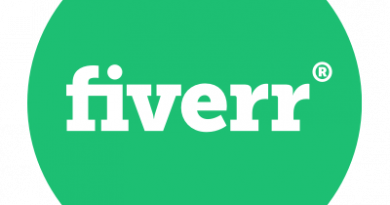Social Media Marketing 101: The Ultimate Beginner’s Guide

January 30, 2018 By Ana Gotter Marketing, Social Media
If you had to guess how much time the average person spends on social media, how long do you think it would be?
Go ahead, guess!
Did you guess an hour and forty minutes? Because if you did, you are correct. Social media usage makes up about 28% of the time we spend the internet, which is significant since more and more of our lives are happening online.
After all, we run our businesses, answer our emails, order food, watch movies and even manage our bills and bank accounts online.
Social media marketing is one of the biggest juggernauts that internet marketing has. It can be endlessly profitable and almost all businesses understand the importance of investing into social media marketing. Many, however, struggle to know where to start. In our social media marketing 101 guide, you’ll learn everything you need to know about how to set up a social media strategy, where to get started, and more.
What Can Social Media Marketing Help Me Accomplish?
Some people make social media marketing seem shallow and superficial, but in reality it should be the exact opposite. With authenticity and transparency (or at least the illusion of it), social media can help you accomplish the following goals:
- Community building and relationship building, fueled by generating discussion
- Brand awareness & discovery (particularly if you’re using social ads)
- Announce new products and business developments to your enthusiastic audience
- Promote events and increase both registration and attendance
- Increasing site traffic as a result of referral clicks
- Driving leads and sales (though the latter should never be the immediate priority on social media)
- Providing value to your audience and establishing your expertise in your field
Social media, unlike other marketing platforms, relies on the transparency we mentioned above in order to accomplish any of these goals.
People don’t just want to see some ad copy—they want to see what makes the wizard tick behind the green curtain, so to speak. They want to feel like they’re getting to know you and your business, because social media is just that: social. If you’re able to put the connection building first, you’ll be off to a great start.
Social Media Platforms To Consider
There are a large number of different social media sites that you can join to promote your business. There’s so many, in fact, that this list doesn’t even cover all the obscure ones.
Regardless, these are the platforms with the largest and most engaged audiences and they’ve all been around long enough that it’s a safe bet to invest time into them now.
Here are the platforms that most businesses should consider joining for marketing purposes:
Would it even be possible to have any site but Facebook at the top of this list? After Myspace’s brief stint in the early 2000s, Facebook dethroned them and has held the crown ever since.
More than ten years later, Pages for brands on Facebook are extraordinary. Customer can see your business hours and store location on a map, write reviews, and view all your latest content. They’ll even see incredible CTAs designed to help your business accomplish all your social media marketing goals.

Many businesses use Facebook as the “center” of their social media marketing. It’s the platform they focus the most energy on and the one they’re most dedicated to maintaining. This is a good strategy, though it’s worth noting that declining reach from the latest algorithm is only going to continue. In order to combat this, share lots of native content (including videos), try to generate discussion on platform, and avoid sharing a lot of outbound links in the meantime.

If you want to reach a new audience quickly or give your posts some help in the newsfeed, you can use Facebook’s incredible ad system to do all this and more.
Twitter seems to have it’s moments, dipping up and down in popularity as a marketing tool. Despite that, it’s managed to stand its ground and many businesses are still happily using it with great success.
Twitter will only be effective as a marketing tool, however, if it’s used to generate discussion. Too many businesses use it to dump links to their blog into the empty void that is a Twitter newsfeed without actually trying to create engagement. If you aren’t having a conversation with other users, your marketing just won’t be effective on this platform.

You can create thought-provoking content, polls, and question-based posts that are designed to get more retweets and responses. Twitter chats, like the one pictured from SEMrush above, are also a great way to nurture a community and jumpstart conversation that centers your business.
Instagram is owned by Facebook, but it’s definitely still very much its own platform. It’s a predominantly visual platform, with aesthetically stunning and interesting videos and pictures reigning supreme.

In addition to having a large number of diverse followers and being a rapidly growing platform, Instagram also has some of the highest engagement rates out of all social platforms. And while they do have an interest-based algorithm instead of a chronological one, it still doesn’t interfere with business profiles nearly as much as Facebook’s new algorithm does.
For best success on Instagram, use all of the features that are available to you. Create Stories and newsfeed posts, and make a heavy use of hashtags to generate discussion, encourage user-generated content and help attract new followers.
LinkedIn should be one of the first profiles you create if you’re in a B2B industry, and you should create profiles for both your personal page and your company. Whether you want to recruit new employees or promote your business (or both), LinkedIn is a valuable resource. It’s where professionals go to share industry news, and you may see a slightly higher caliber of discussion on LinkedIn posts than you may see elsewhere (cough…Twitter…cough).

To get the most out of LinkedIn, you should be posting content that both peers and potential customers would find valuable, actionable, and thought provoking. This is the content that’s shared most often, and what generates the most discussion, and discussion is always a good thing.
Pinterest is a little different from all the other social media platforms, where the focus from users is on saving content instead of distributing it outright. Think of Pinterest as something halfway between a personal wish list and an inspiring vision board. Here you can find everything from recipes for how to make gourmet cupcakes for dogs to instructions on how to paint your bathtub grey, should you be so inclined.

Jokes aside, Pinterest won’t be the right choice for every business, but for those in certain industries it’s a must-have. By placing the right keywords in your profile’s description, and the titles and descriptions of both your boards and pins, you can draw in traffic and share your content, products and ideas with an exceptionally engaged audience.
Just how engaged are they? Let’s take a look:
- 87% of pinners have purchased a product because of Pinterest
- 93% said they used the site to plan a future purchase
- 83% of Pinterest users would rather follow a brand than a celebrity
Pinterest is huge for people looking to research buying decision, with many users actively searching for new products through the site’s native search engine. This makes it an enormous force to be reckoned with.
YouTube
YouTube is as old as Facebook and it’s the largest video sharing platform around. While YouTube is full of cute panda videos and teenagers doing dumb things, it’s also an excellent platform for marketing if you know how to execute it correctly.

Like Pinterest, keywords are an exceptionally important part of YouTube marketing. Place them in your video’s title, description, and tags. You can create video that provides value to your audience through tutorials, how-to demonstrations, Q&As and informational content that your audience is actively looking for. Advance Auto Parts, for example, shows how to do basic car repairs on their channel and they link to their products in the descriptions.
YouTube can be approached as a mixture of a content marketing and social media marketing platform. Remember to always send traffic back to your main site when possible, as that’s a crucial part of finding success on this platform.
Snapchat
I’m not an enormous Snapchat fan and thanks to Instagram and Facebook aggressively poaching their only-there-for-24-hours-before-it-disappears feature, the platform’s usage has declined significantly. That being said, it’s still an exceptionally popular platform with users under the age of 25, so if your market is young Millennials (and younger), this could be a great platform for you.

Snapchat works for brand that can be a little quirky and have a sense of humor. Like Instagram, it’s a visual platform, but unlike Instagram, the images don’t need to be particularly high quality. This makes it a little easier to create mass amounts of content quickly. While Snapchat can be valuable if your audience is on the platform, don’t put all your eggs in one basket with this one.
How Should I Get Started?
When you’re ready to get started with your social media marketing, there’s a few steps that I recommend taking. In order, they are:
- Choose what goals you’re optimizing for. Do you want to find new employees and establish thought leadership? Generate discussion to build relationships and nurture leads? The goals you pick will lead you straight into step 2.
- Identify which platforms would benefit your business most. Remember, you want to start small so that you can maintain the communities fully on each site. With this in mind, pick one or two platforms that would benefit you most. Most businesses should choose Facebook first, but the second platform you choose will depend on your business. Are you in the B2B industry and looking to build thought leadership? Go LinkedIn. Do you have a product that would do well with visual marketing? Hop on Instagram.
- Create a Content Schedule. I actually use publishing software like Agorapulse for all of my social media clients. A content calendar helps you map out what types of posts you want to share, and having it all done in advance means you’ll never miss any opportunities.
- Find Streams of Curated Content. The sheer amount of content that you need is almost unfathomable, and curated content is the way to go. I’d recommend finding different non-competing influencers and businesses that share content your target audience would love and following them. Plan on regularly sharing their content on platforms like Twitter, Facebook, LinkedIn, and Pinterest.
- Monitor everything constantly. Watch your on-platform analytics to see what types of content users are engaging with, and your social trends over time.
And, even more importantly, watch your pages for opportunities of engagement. Answer questions users have as soon as possible. Thank users for their reviews, and engage with comments and responses as often as possible. This is essential for community and relationship building, which is what social media marketing is all about.
Conclusion
Social media marketing has an enormous and diverse audience, and it’s free and accessible. It’s an excellent opportunity to nurture relationships and build an online community, solidifying your place in your customers’ lives. Just remember that for social media to benefit your business, it must be carefully maintained and monitored. Start slow and small, and scale from there.
What do you think? Do you use social media marketing for your business? What strategies benefit you most? Share your thoughts, knowledge, and questions in the comments below!
The following two tabs change content below.
- Bio
- Latest Posts
Ana Gotter
Ana Gotter is a freelance writer specializing in social media and content marketing, though she writes on a variety of other niches and subjects. She can be contacted at anagotter.com.



